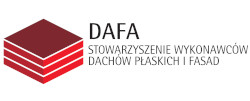Open Access (Artykuł w pliku PDF)
Tunnel lining design using convergence confinement method
dr inż. Mateusz Blajer, AGH w Krakowie, Wydział Inżynierii Lądowej i Gospodarki Zasobami
ORCID: 0000-0001-7748-470X
Adres do korespondencji: Ten adres pocztowy jest chroniony przed spamowaniem. Aby go zobaczyć, konieczne jest włączenie w przeglądarce obsługi JavaScript.
DOI: 10.15199/33.2023.05.03
Studium przypadku
Streszczenie. W artykule przedstawiono wykorzystanie metody kontroli konwergencji do weryfikacji obudowy tunelu drążonego w warunkach fliszu karpackiego. Bazuje ona na obliczeniach numerycznych MES lub MRS i stanowi rozwinięcie metod analitycznych i seminumerycznych, które wykorzystywano w początkach jej stosowania. Dzięki użyciu modeli MES lub MRS możliwe jest odwzorowanie tak skomplikowanego ośrodka, jakim jest flisz karpacki i jego (w większości przypadków) asymetrycznego oddziaływania. Obecnie jedynie przestrzenne modele MES i MRS przewyższają opisywaną metodę pod względem możliwości obliczeniowych.
Słowa kluczowe: metoda kontroli konwergencji; projektowanie obudowy tunelu; GRC; LDP; MES; MRS.
Abstract. The paper presents the use of the convergence confinementmethod for designing and verifying the tunnel lining in the conditions of the Carpathian flysch. It is based on numerical calculations using FEM or FDM and it is a development of the analytical and semi-analytical methods that were used at the beginning of its application. By using FEM or FDMmodels, it is possible to reproduce such a complex medium as the Carpathian flysch and its (mostly asymmetric) actions. Currently, only spatial FEM and FDM models exceed the described method in terms of computational capabilities.
Keywords: convergence confinement method; tunnel lining design; GRC; LDP; FEM; FDM.
Literatura
[1] Tajduś A, Cała M, Tajduś K. Geomechanika w budownictwie podziemnym. Projektowanie i budowa tuneli. 1 ed. Kraków: Wydawnictwa AGH; 2012.
[2] Carranza-Torres C, Fairhurst C. The elasto-plastic response of underground excavations in rock masses that satisfy the Hoek-Brown failure criterion. Int. J. Rock Mech. Min. 1999; https://doi. org/10.1016/S0148-9062 (99) 00047-9.
[3] Fama MED. Numericalmodeling of yield zones in weak rock. In: Fairhurst C, editor. Comprehensive rock engineering. Vol. 2. Oxford: Pergamon, 1993, pp. 49 – 75.
[4] Lee YK, Pietruszczak S. A new numerical procedure for elasto-plastic analysis of a circular opening excavated in a strain-softening rock mass. Tunn. Undergr. Space Technol. 2008; https://doi. org/10.1016/j. tust. 2007.11.002.
[5] Chern JC, Shiao FY, Yu CW.An empirical safety criterion for tunnel construction. In: Ou C-D, Huang T-H, editors. Proceedings of theRegional Symposium on Sedimentary Rock Engineering. Taipei: Public Construction Commission; 1998, pp. 222 – 227.
[6] Panet M, Sulem J. Le calcul des Tunnels par la Methode de Convergence-Confinement. 1st ed. Paris: Presses de l’Ecole Nationale des Ponts et Chausse; 2021.
[7] Unlu T., Gercek H., Effect of Poisson’s ratio on the normalized radial displacements occurring around the face of a circular tunnel. Tunn.Undergr. Space Technol. 2003; https://doi. org/10.1016/S0886- -7798 (03) 00086-5.
[8] Vlachopoulos N, Diederichs MS. Improved Longitudinal Displacement Profiles for Convergence ConfinementAnalysis of Deep Tunnels. RockMech Rock Eng. 2009; https://doi.org/10.1007/s00603- -009-0176-4.
[9] Lunardi P. Design and Construction of Tunnels. Analysis of Controlled Deformations in Rock and Soils (ADECO-RS). 1st ed. Berlin: Springer; 2008.
[10] Marinos P., Marinos V., Hoek E. Geological Strength Index (GSI).Acharacterization tool for assessing engineering properties for rock masses. Underground Works under Special Conditions In: RomanaMeditor. UndergroundWorks under Special Conditions: Proceedings of the ISRMWorkshopW1. Boca Raton, Florida: CRC Press; 2007. pp. 13 – 21.
[11] Bieniawski Z. Engineering Rock Mass Classifications: A Complete Manual for Engineers and Geologist in Mining, Civil and Petroleum Engineering. 1st ed. New York: Wiley; 1989.
[12] Hoek E, Carranza-Torres C, Diederichs M, Corkum B. The 2008 Kersten Lecture: Integration of geotechnical and structural design in tunnelling. In: Proceedings University of Minnesota 56th Annual Geotechnical Engineering Conference Minneapolis: University of Minnesota; 2008.
Przyjęto do druku: 28.03.2023 r.
Materiały Budowlane 05/2023, strona 10-13 (spis treści >>)



























